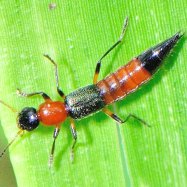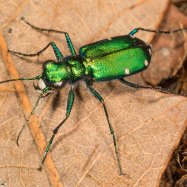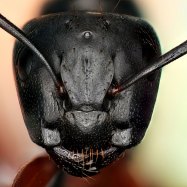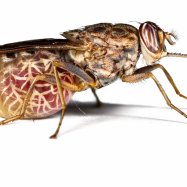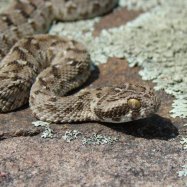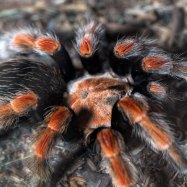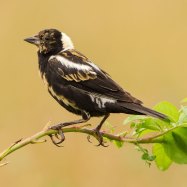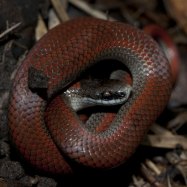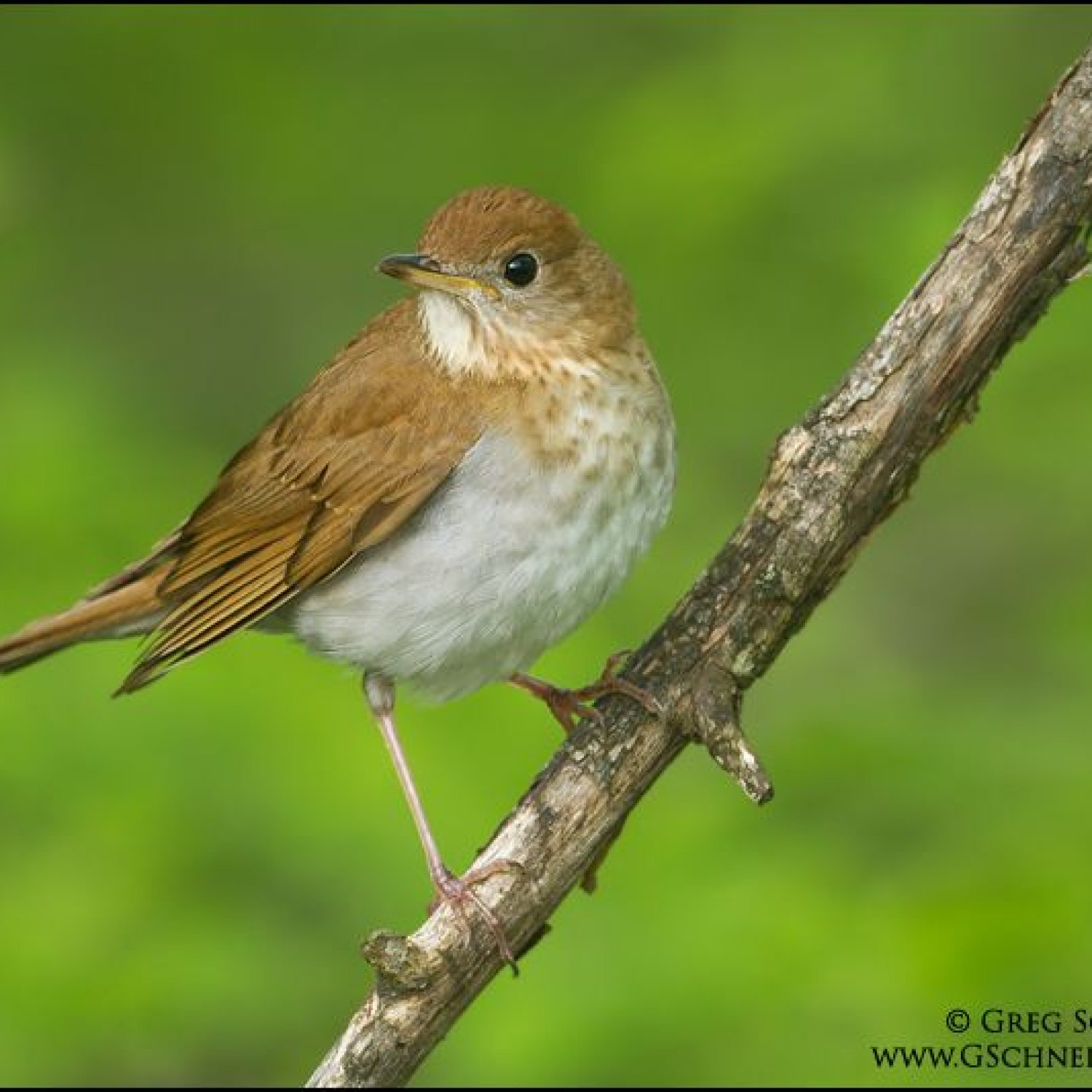
Veery
6-7.5 inches
The Veery, a small and compact bird found in eastern and central North America, is a member of the Turdidae family. With a length of 6-7.5 inches, these birds may be small in size but they make up for it with their beautiful melodies and vibrant colors. Keep an eye out for these lovely creatures in your next nature walk. #Veery #birdwatching #NorthAmerica
Animal Details Summary:
Common Name: Veery
Kingdom: Animalia
Habitat: Deciduous and mixed forests
The Mysterious and Melodious Veery: A Hidden Gem of Eastern and Central North America
Perched on a branch in the lush green forests of North America, the Veery, scientifically known as Catharus fuscescens, is a small, mysterious songbird that often goes unnoticed. Despite its unassuming appearance, the Veery is a fascinating bird with a rich history and a unique set of characteristics that makes it stand out from other avian species.As you walk through the deciduous and mixed forests of eastern and central North America, you'll hear the enchanting melody of the Veery's song. Its lively and intricate tune is often compared to that of a flute, and it has earned the bird the nickname "the bird of a hundred voices Veery." Whether you're a seasoned bird enthusiast or an amateur nature lover, the Veery is sure to capture your heart and leave you mesmerized.
A Classification Fit for a Unique Bird
The Veery belongs to the Animalia kingdom, a diverse group that comprises all animals on earth. Within this kingdom, it falls under the Chordata phylum, indicating that it possesses a spinal cord, just like other vertebrates. From there, it belongs to the Aves class, which includes birds of all shapes and sizes. As for its order, the Veery is classified under Passeriformes, which is the largest order of bird species and includes over half of all known bird species.Within the Passeriformes order, the Veery falls under the family Turdidae, commonly known as thrushes, a family that includes other popular bird species such as the American Robin and the Eastern Bluebird. With its sleek body and revered singing abilities, the Veery is a proud member of this distinguished family.
A Habitat Fit for Both Lush Forests and Musical Notes
The Veery thrives in the dense, humid forests of eastern and central North America, including parts of the United States and Canada. These forests are characterized by a mix of deciduous and mixed trees, providing the perfect environment for the Veery's nesting and breeding Virgin Islands Dwarf Gecko.One of the most intriguing things about the Veery is its choice of habitat. Unlike many other birds that prefer open spaces and wide skies, the Veery is most at home in the quiet depths of the forest. It is secretive and elusive, making it challenging to spot, and often prefers to remain hidden under the cover of trees.
An Insectivore with a Musical Taste
One of the defining characteristics of the Veery is its feeding method. As an insectivore, it feeds primarily on insects such as flies, beetles, and caterpillars. However, unlike many other insect-eating birds, the Veery is unique in its foraging style. Instead of hopping or flying to catch its prey, it prefers to walk along the forest floor, using its sharp beak to pick out insects from the leaves and soil.Furthermore, the Veery's feeding habits are directly linked to its singing abilities. You see, singing is not just for the Veery's own pleasure; it serves a vital purpose in attracting potential mates and warning other birds of its territory. By consuming insects, the Veery gains the necessary energy to produce its beautiful and intricate songs, ensuring its survival in the forest.
A North American Bird with a Global Appeal
While the Veery's geographical distribution is limited, its captivating melodies have reached far and wide. Its breeding range covers a vast portion of eastern and central North America, and during the winter months, the Veery migrates to South America, reaching as far as Argentina.Despite its preference for secluded forests, the Veery has managed to capture the hearts of people from all over the world through its exceptional singing abilities. Many bird enthusiasts frequently travel to North America to witness the Veery's song in its natural habitat, and it has also been featured in numerous folk songs and pieces of literature, further solidifying its global appeal.
A Bird with a Subtle Yet Stunning Appearance
At first glance, the Veery may seem like an ordinary bird with its brown upperparts and creamy white underparts. However, upon closer inspection, its subtle beauty is revealed. Its feathers have a rich reddish-brown hue, and its underparts have thin black arrowhead-shaped spots, adding depth and character to its appearance. The Veery's wings are also distinctive, with a cinnamon-colored patch that contrasts with its overall brown coloration.The Veery's body shape is small and compact, measuring between 6-7.5 inches in length. Its wingspan is around 10-12 inches, making it relatively small compared to other birds. However, do not let its size deceive you. The Veery may be small, but its incredible singing abilities make up for it.
Preserving the Veery's Legacy
Due to its elusive nature and preference for dense forests, the Veery's population is difficult to estimate accurately. It is considered a relatively common bird in its breeding range, but its numbers have been declining in recent years due to habitat loss and degradation. As such, the Veery is classified as "Least Concern" on the International Union for Conservation of Nature (IUCN) Red List, and conservation efforts are ongoing to protect its natural habitat and ensure its survival.If you ever find yourself in the forests of eastern and central North America, take a moment to listen for the distinct melody of the Veery's song. With its unique classification, habitat, feeding method, and beautiful appearance, the Veery is undoubtedly one of Mother Nature's hidden gems. Its hauntingly beautiful song will captivate you, bringing a touch of magic and mystery to the lush green forests of North America.

Veery
Animal Details Veery - Scientific Name: Catharus fuscescens
- Category: Animals V
- Scientific Name: Catharus fuscescens
- Common Name: Veery
- Kingdom: Animalia
- Phylum: Chordata
- Class: Aves
- Order: Passeriformes
- Family: Turdidae
- Habitat: Deciduous and mixed forests
- Feeding Method: Insectivorous
- Geographical Distribution: North America
- Country of Origin: United States and Canada
- Location: Eastern and central North America
- Animal Coloration: Brown upperparts, creamy white underparts
- Body Shape: Small and compact
- Length: 6-7.5 inches
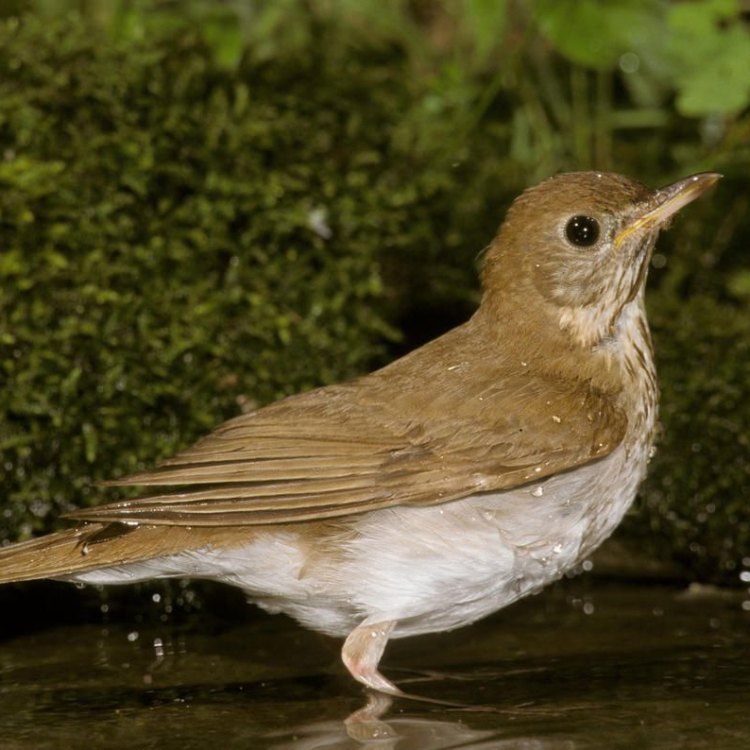
Veery
- Adult Size: Small
- Average Lifespan: Up to 10 years
- Reproduction: Monogamous
- Reproductive Behavior: Builds cup-shaped nests in dense vegetation
- Sound or Call: Musical and flute-like song
- Migration Pattern: Long-distance migratory
- Social Groups: Solitary or in small groups
- Behavior: Shy and secretive
- Threats: Habitat loss, climate change, predation
- Conservation Status: Least Concern
- Impact on Ecosystem: Seed dispersal
- Human Use: None
- Distinctive Features: Speckled breast, dark spots on back
- Interesting Facts: Veeries are known for their beautiful melodies
- Predator: Birds of prey, snakes, mammals
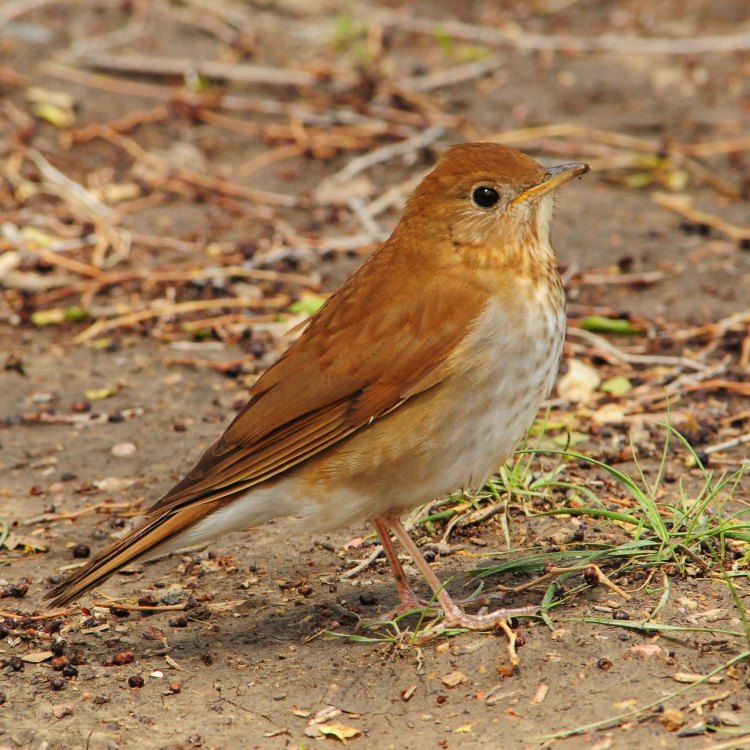
Catharus fuscescens
The Melodious Veery: Discovering the Small but Mighty Songbird
The early morning sun gently filters through the lush green foliage of the forest, creating a serene and tranquil ambiance. In the midst of this serene setting, a beautiful and unique song echoes through the trees, filling the air with its melodic notes. This is the signature sound of the Veery, an unassuming yet fascinating and enchanting songbird.The Veery, also known by its scientific name Catharus Fuscescens, is a small-sized thrush that is a part of the Catharus genus PeaceOfAnimals.Com. They are a common sight across eastern North America, with their range spanning from southern Canada to northern Mexico. Despite their widespread distribution, the Veery is a shy and secretive bird that can be challenging to spot in the wild. Let us delve deeper into the distinctive features, behavior, and impact of this little-known yet remarkable songbird.
A Miniature Beauty with a Big Voice
The Veery is a small-sized bird, measuring around 7 inches (18 cm) in length and weighing only 1.4-1.9 ounces (40-55 grams). However, their small size does not in any way diminish their importance and impact in the ecosystem. They have a distinctive appearance with a speckled chestnut-brown breast and dark spots on their back which helps them blend effortlessly into their forest habitat. Their wings and tails have a reddish-brown hue, and their eyes are a bright golden color, making them a truly enchanting sight Viper Boa.But what truly sets the Veery apart is its musical and flute-like song. They are often described as one of the most beautiful and haunting singers in the avian world. Their call is a melodious cascade of descending notes that can be heard up to half a kilometer away. It is said that their song is almost otherworldly, creating a sense of enchantment and mystery in the forest.
Behavior and Habits: A Solitary Songbird
Veeries are a solitary species and are rarely seen in large groups. They prefer to forage and breed on their own or in small groups consisting of their mate and offspring. During the breeding season, they become even more solitary and are known to become aggressive towards other Veeries or thrush species.During the breeding season, the Veery adopts a monogamous nesting behavior. They choose a mate and pair up for the season, often returning to the same partner year after year. They build their nests in dense vegetation, usually in a cup-shaped design, using materials such as dried grass, leaves, and moss.
Once the mating and nesting season is over, the Veery embarks on a long-distance migratory journey. They travel from their summer breeding grounds in North America to their wintering grounds in southern Mexico, Central America, and northern South America. This long-distance migration is made even more impressive as the Veery is a small and delicate bird, and yet it covers thousands of miles annually.
Threats and Conservation Status
The Veery may be a common sight in eastern North America, but it is facing numerous threats in the wild. Its population has declined by 50% in the past 40 years due to habitat loss, climate change, and predation. The loss of the dense forest cover where they breed and forage, along with changes in weather patterns, has disrupted their breeding and migration cycles. Additionally, they are vulnerable to predation by larger birds of prey, snakes, and mammals.However, despite these threats, the Veery is currently listed as a species of Least Concern in terms of conservation status. This is due to their large breeding range and relatively stable population sizes. Nevertheless, conservation efforts are ongoing to protect and preserve their habitat and raise awareness about their importance in the ecosystem.
The Veery's Impact on the Ecosystem
The Veery's migratory journey plays a crucial role in the dispersal of seeds throughout the forest. As they forage and feed on insects and fruits, they inadvertently pick up and distribute seeds, aiding in the growth and diversity of plant life. Their role in the ecosystem as seed dispersers is essential in maintaining a healthy and balanced forest ecosystem.Interesting Facts: A Bird of Many Talents
Apart from its distinctive song and important role in the ecosystem, the Veery has many interesting facts and abilities that make it a truly fascinating and unique bird. Some of these include:- They belong to the thrush family, which includes other well-known songbirds such as the American Robin and Eastern Bluebird.
- They are often referred to as the "Rain Thrush" due to their tendency to sing before, during, and after rain showers.
- Veeries are nocturnal migrants, meaning they travel at night, using the stars to guide their journey.
- Their scientific name "Catharus Fuscescens" means "Dark Brown Singer."
- They are capable of imitating the songs of other birds, making them excellent mimics.
Wrap Up
In conclusion, the Veery, with its small size and unassuming nature, is a bird that is worth celebrating and protecting. Its melodious notes, crucial role in seed dispersal, and unique abilities make it a vital part of the ecosystem. With ongoing conservation efforts and awareness, we can ensure that this miniature beauty continues to enchant us with its haunting song for generations to come. So next time you take a walk in the forest, keep an ear open for the enchanting melodies of the Veery and take a moment to appreciate this small but mighty songbird.
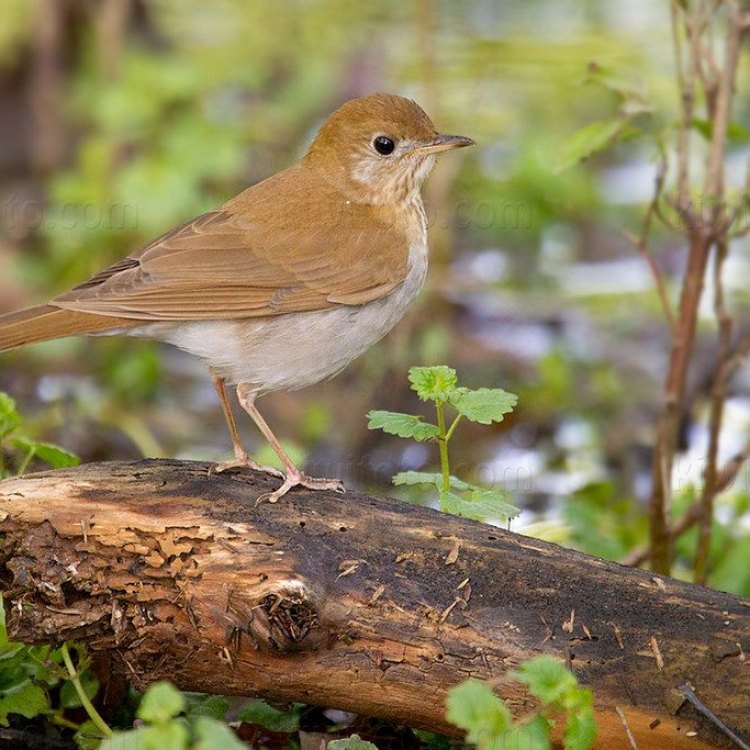
The Mysterious and Melodious Veery: A Hidden Gem of Eastern and Central North America
Disclaimer: The content provided is for informational purposes only. We cannot guarantee the accuracy of the information on this page 100%. All information provided here may change without prior notice.

